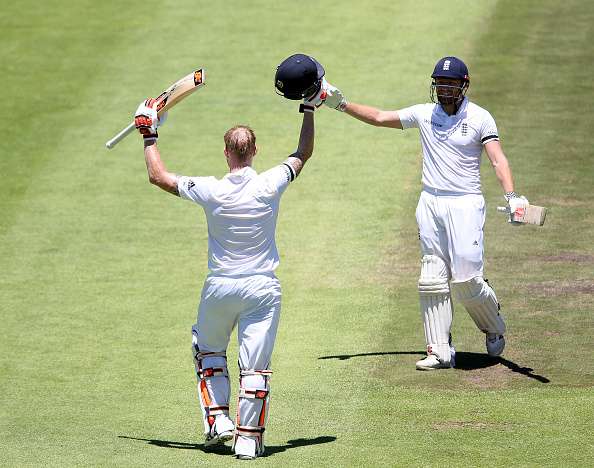Alex Narey speaks to Wisden editor Lawrence Booth about the history of the Almanack, and what makes it the most famous sports book in the world
Earlier this month, the 2016 – and 153rd – edition of the Wisden Cricketers’ Almanack, the game’s much-heralded reference tome, was released amid the usual fanfare. Forget the County Championship, which had already been ticking along for four days, and the saturated T20 fest that continues to be thrown at us from all corners of the globe, for the game’s statty anoraks, it was the sight of Wisden’s iconic yellow-sleeved offering on the shelves of bookstores up and down the country on April 14 that truly signalled the start of the cricketing summer.
Wisden’s Almanack has come a long way since its somewhat humble beginning back in 1864. In the same year that over-arm bowling was legalised, John Wisden, the retired Sussex all-rounder, was facing the embryonic stages of a career in publishing. You would have needed a spare shilling in your pocket for Wisden’s first Cricketers’ Almanack, and if cricket alone didn’t tackle your senses, the book also featured details on the winner of the Oaks and St Ledger, as well as a feature on the length of canals in Britain & Ireland. Go figure…
Since then, the Almanack has evolved to become the most enduring name in cricket publishing. But what makes it such an engaging and respected publication? Well, there’s the accuracy, for starters, and the writing, over the years, has always been of the most supreme nature. Meanwhile, Wisden’s Five Cricketers of the Year – won this year by Jonny Bairstow, Ben Stokes, Steve Smith, Brendon McCullum and Kane Williamson and perhaps the only section of the Almanack that leaves itself open to pub talk debating the rights and wrongs of those players honoured enough to be picked – has become the marketing heartbeat of the book.
I personally can remember the first time I held an Almanack; it was August, 1986, and my own personal love affair with the game had only just begun.
That summer had been of a most tempestuous nature. England had already lost 2-0 to India at home and were heading for defeat in a three-match series against New Zealand. David Gower had endured a very public sacking following the 5-0 ‘blackwash’ against the West Indies earlier in the year, and the bleached locks of Ian Botham were seemingly splashed across the front pages of every national tabloid following the all-rounder’s ban for smoking cannabis. In short, English cricket was in a bit of a pickle…
But the bad feeling around the country’s summer sport was far removed from the contents of that Almanack I first read. It was the 1982 edition. Edited by the revered John Woodcock, it delivered the statistics and the memories of an electric summer where Mike Brearley’s England had regained the Ashes, with Botham the comic book hero. I was too young to remember that Ashes conquest, but the Almanack surmised the events beautifully. Even for a ten-year-old lad, its understated delivery and factual recordings were enough to have me hooked. I have never stopped loving the game since.
Thirty years on, it’s fair to say the publishing landscape has changed drastically. But if ever there was a blueprint for a print ‘annual’ to survive in this digitally driven age, the Almanack is surely it. Its editor, Lawrence Booth, is acutely aware of the need to change in order to fend off the challenge. For many, Wisden has always been recognised first as a book of scorecards and numbers, and those scorecards and numbers, along with the wave of cricket stats that Wisden has long hung its hat on, are naturally updated elsewhere in seconds. So what can Wisden do to make the most of the bracket they have? How have they changed the perception that the Almanack simply delivers what you can find elsewhere?
“The fact is that Wisden would not sell if there were not a lot of statty cricket fans knocking around,” says Booth, who took the reins at Wisden in early 2011, with the 2016 instalment his fifth as editor.
“But we have to find a way of managing our records section to make it valuable and not the thrust of the book that it perhaps used to be. Matthew Engel was the first Wisden editor who really tried to change the book’s perception as a one-stop shop for statistics. He always argued that Wisden should be a ‘really good read’. So we have 280 pages up the front of the book that are essays and in-depth pieces from the best writers in the game.
“I have tried to change that perception a bit and we now have a website where we can update our records. So we are trying to adapt to the internet age, which is difficult for an annual. But that is the aim.
“It is a book of records, but you want people to read the essays and see what was going on in the world of cricket. Half the battle for me as editor is that, yes, I want it to be a book of records, but I also want it to be a really good read and not too dry.”
The best-selling Almanack of recent years was in 2006, which told the story of the 2005 Ashes campaign, and despite the outside influences of bloggers and tweeters, Booth claims sales are still solid. But should we be surprised that an annual can survive with such clarity in today’s market? Well, perhaps, but reputations still go a long way and no publication carries the weight of reputation that the Almanack does.
“It sounds obvious, but the success of Wisden is down to the work that has been done on it,” says Booth.
“By that I mean nothing I have done, but the many years before where the book has been established with authority, accuracy and above all, independence. This is important because we live in an instant comment world where people are used to having their say on Twitter, and then it disappears. But there is room for a voice that steps back, and I think that’s what people like about Wisden – that it’s independent.”
Indeed, the independence issue is crucial, because the Almanack is a book for cricket lovers. It is not dependent on your cricketing views. Lancastrian or Yorkshireman; Labour or Conservative; a county diehard with flask and sandwiches or a Barmy Army reveller with a four-pack of Fosters Gold, the fact is, if you love cricket, there is something in Wisden for you. And, whoever flicks your switch in a writing sense and whatever paper your political senses point you to where they can be read – Booth himself is a respected scribe with the Daily Mail – there will always be a voice of reason in Wisden with an eclectic mix of the game’s best writing talent.
In short, Wisden doesn’t tell you to read it; people just do.
“We don’t have an axe to grind,” adds Booth. “But if it is in Wisden, it matters.”
A case in point came in last year’s edition. Penning his editor’s notes at the front of the book, Booth ran the rule over 12 miserable months for English cricket. A 5-0 drubbing in the Ashes; the Kevin Pietersen saga and sacking; a shambolic World T20 in Bangladesh with a defeat to the Netherlands thrown in for good measure; a home loss to Sri Lanka; and the hapless challenge at the 2015 World Cup that followed the puzzling dismissal, in terms of timing, of Alastair Cook as one-day captain.
Meeting Booth, you appreciate he is not a man to hammer a nail in when it isn’t necessary. But the ECB, along with the other two ruling bodies of cricket’s ‘Big Three’, Australia and India, were in the firing line. Booth also claimed English cricket ‘repeatedly lost touch, not just with things it wished had never happened, but with the basic idea that the national team belongs to us all’.
The notes were enough to publicly rile Clarke (right), which only illustrates the point Booth makes about Wisden’s impact with the messages it relays. Had those words been written elsewhere, even by Booth in the Daily Mail, the impact would not have been so severe; a throwaway line in a paper that will be thrown away. But in the Almanack, the mud sticks.
“Yes Wisden’s tone is quite understated,” says Booth. “But that means when we go hard at something in the notes, it does make an impact. People say about Trevor Bayliss that he doesn’t say much but when he does, you listen… well I think that’s something quite similar with Wisden. We have to be careful not to shriek, that’s the key. We don’t want to ham it up for the sake of publicity. I am always conscious when I am writing my notes: will someone pick this up in 20 years and read those notes and think, yes, this is a reasonable and solid take on the game – this can be trusted.
“It’s a hard balance to make because you do want to make an impact at the time and you want people to keep talking about Wisden because you want to keep selling it, but it has to stand the test of time too.”
Thankfully, Booth’s notes in this year’s Almanack reflect a far more positive outlook for the English game. He is quick to point out (not in his notes, but to me) that the story is about cricket, rather than the administrators who have been “too much part of the story of late”.
But I can’t let our meeting end without one final question that has been nagging me. For a book that tops over 1,500 pages, I am intrigued to know how the Almanack manages to stay so error-free, especially considering Booth is only joined by four other full-time members of staff.
“It doesn’t,” he jokes. “We have an errata page where we have to own up to previous cock-ups. Every year, we have one reader who spots the tiniest little details. It’s just not possible to not make a mistake. I have never worked at a place with a more rigorous editorial process. The copy comes in, someone will edit it, then it will be passed to another person who will fact check it, then it will go to proof, where we all read it, then we’ll check that the changes have been made correctly. So there’s a five-stage process and we do our best. But something creeps through.
“Frankly, it’s a bloody miracle we get the thing out of the door!”
This piece originally featured in The Cricket Paper, Friday April 29 2016












